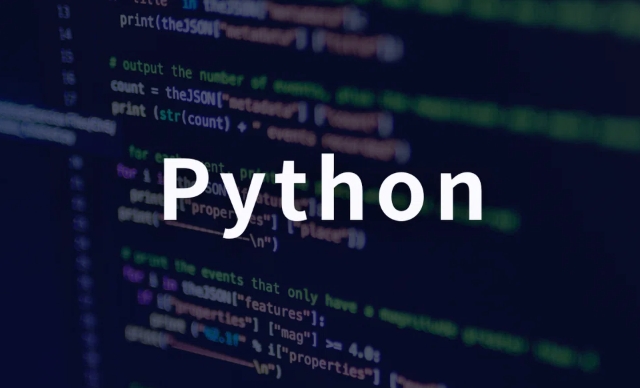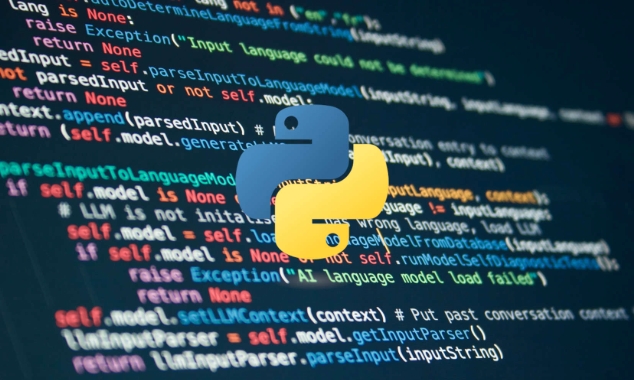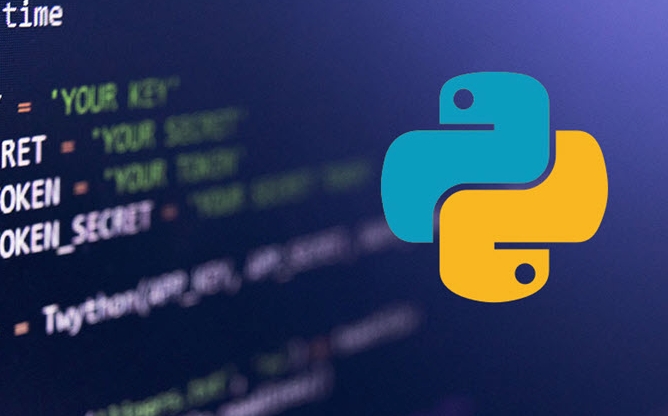Real-time Image Processing with Python and OpenCV
Jul 17, 2025 am 02:58 AMThe key to mastering Python and OpenCV to implement real-time image processing lies in three steps: 1. Install the necessary libraries and test the camera to read the picture; 2. Perform real-time processing operations such as grayscale, blur, and edge detection on each frame; 3. Optimize performance by reducing resolution, controlling frame rate, reducing calculation areas, etc., so as to maintain smooth operation on low-configuration devices.

Real-time image processing sounds quite high-end, but in fact, as long as you master a few key points, it can be easily achieved with Python and OpenCV. OpenCV is a very mature computer vision library. With Python's concise syntax, real-time image processing is not only efficient, but also the learning cost is not as high as expected.

1. Preparation: Environment construction and basic dependence
To start real-time image processing, you must first make sure your development environment is ready. Python OpenCV is the core combination, and it may also require NumPy to process image data.
The installation command is simple:

- Install OpenCV (with extra modules):
pip install opencv-python-headless
Or if you need GUI features (such as displaying the camera screen):
pip install opencv-python
Then you can quickly test whether the camera can read the screen normally through the following code:

import cv2
cap = cv2.VideoCapture(0)
While True:
ret, frame = cap.read()
if not ret:
break
cv2.imshow('Live', frame)
if cv2.waitKey(1) == 27: # Press ESC to exit break
cap.release()
cv2.destroyAllWindows()Although this example is simple, it is the basis of all real-time image processing.
2. Basic operations of real-time image processing
Once you can read frames from the camera, you can perform various image processing operations next. Common ones include grayscale, edge detection, blur, color space conversion, etc.
For example, the following code will convert each frame into a grayscale and display it in real time:
import cv2
cap = cv2.VideoCapture(0)
While True:
ret, frame = cap.read()
if not ret:
break
gray = cv2.cvtColor(frame, cv2.COLOR_BGR2GRAY)
cv2.imshow('Gray', gray)
if cv2.waitKey(1) == 27:
break
cap.release()
cv2.destroyAllWindows()Other common operations include:
- Gaussian Blur
cv2.GaussianBlur() - Edge detection:
cv2.Canny() - Contour detection: Combining
cv2.findContours()andcv2.drawContours() - Color recognition: It is easier to extract specific color ranges using HSV color space
These operations can process each frame in a loop to achieve real-time effects.
3. Tips for performance optimization
Real-time processing has certain performance requirements, especially on low-configuration devices. Here are some practical suggestions:
Reduce resolution : The camera's default resolution may be very high, but the actual processing does not need to be so clear, and you can set a lower width and height:
cap.set(cv2.CAP_PROP_FRAME_WIDTH, 640) cap.set(cv2.CAP_PROP_FRAME_HEIGHT, 480)
Appropriately controlling the frame rate : Not only 30 frames per second is called "real-time", sometimes limiting the frame rate is more stable. You can add
time.sleep()to the loop to control the frequency.Reduce unnecessary calculations : for example, only processing areas of interest (ROI) instead of the entire picture.
Multithreaded processing : If the logic is complex, the image acquisition and processing can be separated from the thread to avoid blocking the main loop.
These small tweaks can make the program run smoother, especially useful on Raspberry Pi or older notebooks.
Basically that's it. Once you master these basics, you can try more advanced features, such as face recognition, motion detection, target tracking, etc. The whole process is not complicated, but the details are easy to ignore, especially the performance tuning part, which is often determined by experience.
The above is the detailed content of Real-time Image Processing with Python and OpenCV. For more information, please follow other related articles on the PHP Chinese website!

Hot AI Tools

Undress AI Tool
Undress images for free

Undresser.AI Undress
AI-powered app for creating realistic nude photos

AI Clothes Remover
Online AI tool for removing clothes from photos.

Clothoff.io
AI clothes remover

Video Face Swap
Swap faces in any video effortlessly with our completely free AI face swap tool!

Hot Article

Hot Tools

Notepad++7.3.1
Easy-to-use and free code editor

SublimeText3 Chinese version
Chinese version, very easy to use

Zend Studio 13.0.1
Powerful PHP integrated development environment

Dreamweaver CS6
Visual web development tools

SublimeText3 Mac version
God-level code editing software (SublimeText3)

Hot Topics
 How is Wasserstein distance used in image processing tasks?
Jan 23, 2024 am 10:39 AM
How is Wasserstein distance used in image processing tasks?
Jan 23, 2024 am 10:39 AM
Wasserstein distance, also known as EarthMover's Distance (EMD), is a metric used to measure the difference between two probability distributions. Compared with traditional KL divergence or JS divergence, Wasserstein distance takes into account the structural information between distributions and therefore exhibits better performance in many image processing tasks. By calculating the minimum transportation cost between two distributions, Wasserstein distance is able to measure the minimum amount of work required to transform one distribution into another. This metric is able to capture the geometric differences between distributions, thereby playing an important role in tasks such as image generation and style transfer. Therefore, the Wasserstein distance becomes the concept
 Application of AI technology in image super-resolution reconstruction
Jan 23, 2024 am 08:06 AM
Application of AI technology in image super-resolution reconstruction
Jan 23, 2024 am 08:06 AM
Super-resolution image reconstruction is the process of generating high-resolution images from low-resolution images using deep learning techniques, such as convolutional neural networks (CNN) and generative adversarial networks (GAN). The goal of this method is to improve the quality and detail of images by converting low-resolution images into high-resolution images. This technology has wide applications in many fields, such as medical imaging, surveillance cameras, satellite images, etc. Through super-resolution image reconstruction, we can obtain clearer and more detailed images, which helps to more accurately analyze and identify targets and features in images. Reconstruction methods Super-resolution image reconstruction methods can generally be divided into two categories: interpolation-based methods and deep learning-based methods. 1) Interpolation-based method Super-resolution image reconstruction based on interpolation
 In-depth analysis of the working principles and characteristics of the Vision Transformer (VIT) model
Jan 23, 2024 am 08:30 AM
In-depth analysis of the working principles and characteristics of the Vision Transformer (VIT) model
Jan 23, 2024 am 08:30 AM
VisionTransformer (VIT) is a Transformer-based image classification model proposed by Google. Different from traditional CNN models, VIT represents images as sequences and learns the image structure by predicting the class label of the image. To achieve this, VIT divides the input image into multiple patches and concatenates the pixels in each patch through channels and then performs linear projection to achieve the desired input dimensions. Finally, each patch is flattened into a single vector, forming the input sequence. Through Transformer's self-attention mechanism, VIT is able to capture the relationship between different patches and perform effective feature extraction and classification prediction. This serialized image representation is
 Quickly install OpenCV study guide using pip package manager
Jan 18, 2024 am 09:55 AM
Quickly install OpenCV study guide using pip package manager
Jan 18, 2024 am 09:55 AM
Use the pip command to easily install OpenCV tutorial, which requires specific code examples. OpenCV (OpenSource Computer Vision Library) is an open source computer vision library. It contains a large number of computer vision algorithms and functions, which can help developers quickly build image and video processing related applications. Before using OpenCV, we need to install it first. Fortunately, Python provides a powerful tool pip to manage third-party libraries
 OpenCV installation tutorial: a must-read for PyCharm users
Feb 22, 2024 pm 09:21 PM
OpenCV installation tutorial: a must-read for PyCharm users
Feb 22, 2024 pm 09:21 PM
OpenCV is an open source library for computer vision and image processing, which is widely used in machine learning, image recognition, video processing and other fields. When developing using OpenCV, in order to better debug and run programs, many developers choose to use PyCharm, a powerful Python integrated development environment. This article will provide PyCharm users with an installation tutorial for OpenCV, with specific code examples. Step One: Install Python First, make sure you have Python installed
 Scale Invariant Features (SIFT) algorithm
Jan 22, 2024 pm 05:09 PM
Scale Invariant Features (SIFT) algorithm
Jan 22, 2024 pm 05:09 PM
The Scale Invariant Feature Transform (SIFT) algorithm is a feature extraction algorithm used in the fields of image processing and computer vision. This algorithm was proposed in 1999 to improve object recognition and matching performance in computer vision systems. The SIFT algorithm is robust and accurate and is widely used in image recognition, three-dimensional reconstruction, target detection, video tracking and other fields. It achieves scale invariance by detecting key points in multiple scale spaces and extracting local feature descriptors around the key points. The main steps of the SIFT algorithm include scale space construction, key point detection, key point positioning, direction assignment and feature descriptor generation. Through these steps, the SIFT algorithm can extract robust and unique features, thereby achieving efficient image processing.
 How to use AI technology to restore old photos (with examples and code analysis)
Jan 24, 2024 pm 09:57 PM
How to use AI technology to restore old photos (with examples and code analysis)
Jan 24, 2024 pm 09:57 PM
Old photo restoration is a method of using artificial intelligence technology to repair, enhance and improve old photos. Using computer vision and machine learning algorithms, the technology can automatically identify and repair damage and flaws in old photos, making them look clearer, more natural and more realistic. The technical principles of old photo restoration mainly include the following aspects: 1. Image denoising and enhancement. When restoring old photos, they need to be denoised and enhanced first. Image processing algorithms and filters, such as mean filtering, Gaussian filtering, bilateral filtering, etc., can be used to solve noise and color spots problems, thereby improving the quality of photos. 2. Image restoration and repair In old photos, there may be some defects and damage, such as scratches, cracks, fading, etc. These problems can be solved by image restoration and repair algorithms
 How to do image processing and recognition in Python
Oct 20, 2023 pm 12:10 PM
How to do image processing and recognition in Python
Oct 20, 2023 pm 12:10 PM
How to do image processing and recognition in Python Summary: Modern technology has made image processing and recognition an important tool in many fields. Python is an easy-to-learn and use programming language with rich image processing and recognition libraries. This article will introduce how to use Python for image processing and recognition, and provide specific code examples. Image processing: Image processing is the process of performing various operations and transformations on images to improve image quality, extract information from images, etc. PIL library in Python (Pi






